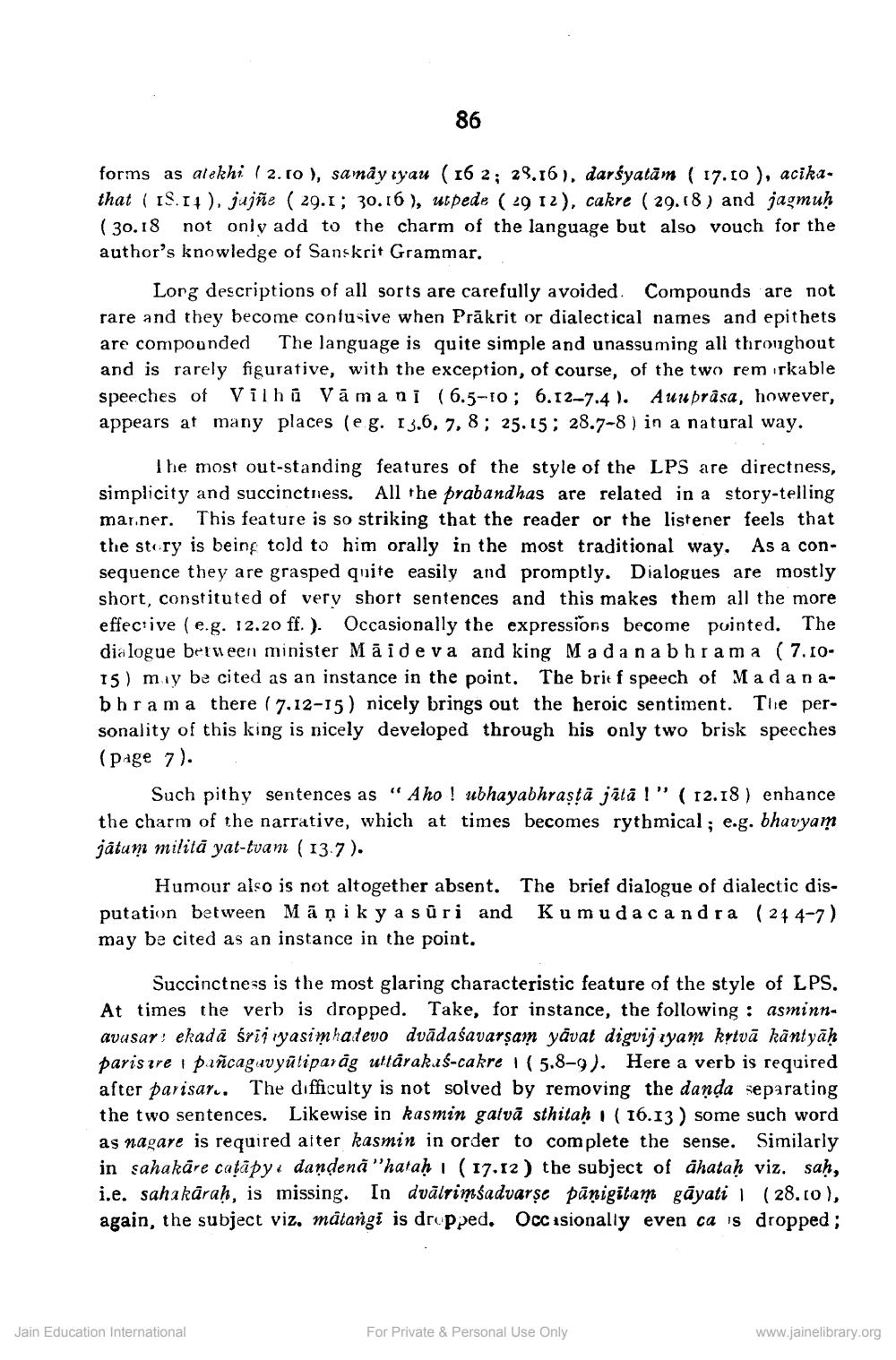________________
86
forms as alekhi (2.10), samay yau (16 2; 28.16), darśyatām (17.10), acikathat (18.14), jujñe (29.1; 30.16), utpede 29 12), cakre (29.18) and jagmuḥ (30.18 not only add to the charm of the language but also vouch for the author's knowledge of Sanskrit Grammar.
Long descriptions of all sorts are carefully avoided. Compounds are not rare and they become confusive when Prakrit or dialectical names and epithets are compounded The language is quite simple and unassuming all throughout and is rarely figurative, with the exception, of course, of the two rem rkable speeches of Vilhu Vamani (6.5-10; 6.12-7.4). Auuprasa, however, appears at many places (eg. 13.6, 7, 8; 25.15; 28.7-8) in a natural way.
The most out-standing features of the style of the LPS are directness, simplicity and succinctness. All the prabandhas are related in a story-telling
marner. This feature is so striking that the reader or the listener feels that the story is being told to him orally in the most traditional way. As a consequence they are grasped quite easily and promptly. Dialogues are mostly short, constituted of very short sentences and this makes them all the more effective (e.g. 12.20 ff.). Occasionally the expressions become pointed. The dialogue between minister Maideva and king Madanabhrama (7.1015) may be cited as an instance in the point. The brief speech of Madanabhrama there (7.12-15) nicely brings out the heroic sentiment. The personality of this king is nicely developed through his only two brisk speeches (page 7).
Such pithy sentences as "Aho ubhayabhraṣṭā jātā!" (12.18) enhance the charm of the narrative, which at times becomes rythmical; e.g. bhavyam jatum militä yat-tvam (13.7).
Humour also is not altogether absent. The brief dialogue of dialectic disputation between Manikya suri and Kumudacandra (244-7) may be cited as an instance in the point.
Succinctness is the most glaring characteristic feature of the style of LPS. At times the verb is dropped. Take, for instance, the following: asminnavusar: ekadā śrij yasimhadevo dvādaśavarṣam yāvat digvijayam kṛtvā kāntyāḥ parisire pañcaguvyūtiparāg uttarakaś-cakre | ( 5.8-9). Here a verb is required after parisar.. The difficulty is not solved by removing the danda separating the two sentences. Likewise in kasmin galvā sthitaḥ (16.13) some such word as nagare is required after kasmin in order to complete the sense. Similarly in sahakāre caṭapy dandena "hataḥ (17.12) the subject of ahataḥ viz. saḥ, i.e. sahakāraḥ, is missing. In dvalrimśadvarṣe panigītam gāyati | (28.10), again, the subject viz. matangi is dropped. Occasionally even ca is dropped;
Jain Education International
For Private & Personal Use Only
www.jainelibrary.org




